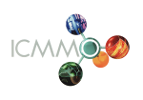The beginnings of chemistry at Orsay spread out at the turn of the 1950s and 1960s. At that time, the installation of the linear accelerator had made Orsay the French center of nuclear physics, and it was these physicists who, far from falling back on their specialty, wanted to surround themselves with other scientific specialties: not only the other specialties of physics, but also those of chemistry, biology and geology. This non-selfish vision of "Physicists-first-occupiers" is certainly one of the very positive factors in the development of chemistry at Orsay, especially since subsequently, both in the Councils and in the field, the support of the physics to chemistry has never wavered.
At the very beginning, Orsay was a branch of the Sorbonne and it was the holders of the Sorbonne who created the teachings (G. Pannetier, A. Michel, M. Chemla). Under the impetus of a new "independence" generation vis-à-vis the Sorbonnards, the first buildings intended for research in chemistry were built: 350 for chemistry-physics first, then 410 for organic chemistry. and inorganic. From then on, the specialties that will make the influence of Orsay are installed. In chemistry-physics, the study of radiation-matter interactions is developing with its corollaries, which are spectroscopy and photochemistry (M. Magat). On the inorganic side, it is above all metallurgy (M. Lacombe) and thermodynamics that are in the spotlight (Dodé, Guérin), while organic chemistry begins with organometallic synthesis (M. Fréon) and structural chemistry (J. Julien).
A new stage was reached at the beginning of the 70s and 80s with the explosion in the number of students. Building 420 is built and it mainly accommodates organic scientists with specialties in natural products (M. Fétizon), carbocycles (JM. Conia), asymmetric synthesis (H. Kagan), sucrochemistry (S. David), bioorganic chemistry (A. Gaudemer ) and inorganic chemistry (O. Kahn). It was also at this time that we witnessed the explosion of quantum chemistry (L. Salem, O. Eisenstein), a real interface that is now irreplaceable between all the disciplines of chemistry.
It was at the instigation of the late Olivier Kahn that the Molecular Chemistry Institute of Orsay was created in 1980, a research federation bringing together 6 units associated with the CNRS, wishing to pool an international level technical platform and to work on promising cross-cutting themes: chemistry-biology interface, biomimetic synthesis, bio-inorganic chemistry, catalysis and spectroscopy.
Today, chemistry is structured into two large joint research units (UMR) associated with the CNRS. The Chemistry-Physics Laboratory (LCP), organized around the ELYSE rapid kinetics center, which explores various scientific fields at the frontiers of chemistry, physics and biology. The Molecular Chemistry and Materials Institute of Orsay (ICMMO) whose cross-cutting themes are chemistry for health, chemistry for energy, chemistry for information and chemistry for the environment.

